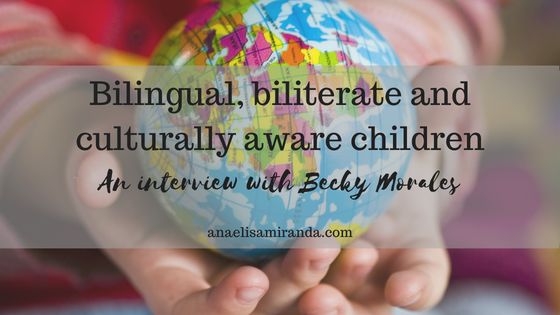So there we have it – ‘minority’ languages have just as much cognitive impact as ‘majority’ ones – great news for heritage languages! Thanks to Michela for her PhD research with Bilingualism Matters at Edinburgh Uni.
Instructional Materials and Glossaries
INSTRUCTIONAL MATERIALS
These instructional materials are to help teachers who are working with ELLs. They are only for instructions, not for ELL accommodation.
- Literary Terms & Devices for Language Arts – Arabic, Bengali, Chinese (simplified), Chinese (traditional), French, German, Haitian, Hindi, Italian, Japanese, Karen, Khmer, Korean, Nepali, Portuguese, Punjabi, Russian, Somali, Spanish, Ukrainian, Urdu, Vietnamese
- Key Terms Used to Describe Practices Related to the Education of ELLs in New York – English/Spanish
GLOSSARIES
Bilingual glossaries are an essential and expected test accommodation for English Language Learners in the State of New York. This website presents glossaries for at least the top 10 state languages at the state level, but it is updated with new languages based on requests from schools and updates in state data. Glossaries are for instruction and FOR TESTING accommodations of ELL STUDENTS. The Glossaries may be downloaded, printed and disseminated to educators, students and parents of ELLs.
English Language Arts (ELA) Glossaries
Albanian, Arabic, Bengali, Burmese, Chinese (simplified & traditional), French, Fulani, Greek, Haitian, Hindi, Italian, Japanese, Karen, Khmer, Kinyarwanda, Korean, Malay, Mandinka, Marshallese, Nepali, Polish, Portuguese, Punjabi, Russian, Slovak, Somali, Spanish, Swahili, Tagalog, Thai, Tibetan, Turkish, Twi, Ukrainian, Urdu, Uzbek, Vietnamese, Wolof
GLOSSARIES OF COGNATES
English/French cognates, English/Haitian cognates, English/Spanish cognates
False Cognates – English/Spanish
MATH GLOSSARIES
- Elementary School Math
Albanian, Arabic, Bengali, Burmese, Chinese (simplified), Chinese (traditional), Dutch, French, Fulani, Greek, Haitian, Hindi, Italian, Japanese, Karen, Kinyarwanda, Korean, Malay, Mandinka, Nepali, Polish, Portuguese, Punjabi, Romanian, Russian, Slovak, Spanish, Swahili, Tagalog, Thai, Tibetan, Turkish, Twi, Ukrainian, Urdu, Uzbek, Vietnamese, Wolof - Middle School Math
Albanian, Arabic, Bengali, Burmese, Chinese (simplified), Chinese (traditional), Dutch, French, Fulani, Greek, Haitian, Hindi, Italian, Japanese, Karen, Kinyarwanda, Korean, Malay, Mandinka, Nepali, Polish, Portuguese, Punjabi, Romanian, Russian, Slovak, Spanish, Swahili, Tagalog, Thai, Tibetan, Turkish, Twi, Ukrainian, Urdu, Uzbek, Vietnamese, Wolof
- High School Integrated Algebra
Albanian, Arabic, Bengali, Bosnian, Burmese, Chinese (simplified), Chinese (traditional), Dutch, French, Fulani, Greek, Haitian, Hindi, Italian, Japanese, Karen, Khmer, Kinyarwanda, Korean, Malay, Mandinka, Nepali, Polish, Portuguese, Punjabi, Russian, Slovak, Spanish, Swahili, Tagalog, Thai, Tibetan, Turkish, Twi, Ukrainian, Urdu, Uzbek, Vietnamese, Wolof - High School Geometry
Albanian, Arabic, Bengali, Burmese, Chinese (simplified), Chinese (traditional), Dutch, French, Fulani, Greek, Haitian, Hindi, Italian, Karen, Kinyarwanda, Korean, Malay, Mandinka, Nepali, Polish, Portuguese, Punjabi, Russian, Slovak, Spanish, Swahili, Tagalog, Thai, Tibetan, Turkish, Twi, Ukrainian, Urdu, Uzbek, Vietnamese, Wolof - High School Algebra 2
Albanian, Arabic, Bengali, Burmese, Chinese (simplified), Chinese (traditional), Dutch, French, Fulani, Greek, Haitian, Italian, Karen, Kinyarwanda, Korean, Malay, Mandinka, Nepali, Polish, Portuguese, Russian, Slovak, Spanish, Swahili, Tagalog, Thai, Tibetan, Turkish, Twi, Ukrainian, Urdu, Uzbek, Vietnamese, Wolof - High School Calculus
Chinese (simplified), French, Haitian, Spanish - High School Common Core Math Terms Addenda
Albanian, Arabic, Bengali, Bosnian, Burmese, Chinese (simplified), Dutch, French, Fulani, Greek, Haitian, Hindi, Italian, Japanese, Karen, Khmer, Kinyarwanda, Malay, Mandinka, Nepali, Polish, Portuguese, Punjabi, Russian, Slovak, Spanish, Swahili, Tagalog, Thai, Tibetan, Turkish, Twi, Ukrainian, Urdu, Uzbek, Vietnamese, Wolof - Supplementary Math Glossaries
Arabic, Bengali, Burmese, Chinese (simplified), Chinese (traditional), Haitian, Korean, Polish, Russian, Spanish, Vietnamese
SCIENCE GLOSSARIES
- Elementary School Science
Albanian, Arabic, Bengali, Burmese, Chinese (simplified), Chinese (traditional), Dutch, Farsi, French, Fulani, Greek, Haitian, Hindi, Italian, Japanese, Karen, Kinyarwanda, Korean, Malay, Mandinka, Nepali, Polish, Portuguese, Punjabi, Russian, Slovak, Spanish, Swahili, Tagalog, Thai, Tibetan, Turkish, Twi, Ukrainian, Urdu, Uzbek, Vietnamese, Wolof - Middle School Science
Albanian, Arabic, Bengali, Burmese, Chinese (simplified), Chinese (traditional), Farsi, French, Fulani, Haitian, Hindi, Italian, Japanese, Karen, Kinyarwanda, Korean, Malay, Mandinka, Nepali, Polish, Portuguese, Punjabi, Russian, Slovak, Spanish, Swahili, Tagalog, Thai, Tibetan, Turkish, Twi, Ukrainian, Urdu, Uzbek, Vietnamese, Wolof - High School Earth Science
Albanian, Arabic, Bengali, Bosnian, Burmese, Chinese (simplified), Chinese (traditional), Dutch, Farsi, French, Fulani, Greek, Gujarati, Haitian, Hindi, Italian, Karen, Kinyarwanda, Korean, Malay, Mandinka, Nepali, Polish, Portuguese, Punjabi, Russian, Slovak, Spanish, Swahili, Tagalog, Thai, Tibetan, Turkish, Twi, Ukrainian, Urdu, Uzbek, Vietnamese, Wolof - High School Living Environment (Biology)
Albanian, Arabic, Bengali, Bosnian, Burmese, Chinese (simplified), Chinese (traditional), Dutch, Farsi, French, Fulani, Greek, Haitian, Hindi, Italian, Japanese, Karen, Khmer, Kinyarwanda, Korean, Malay, Mandinka, Nepali, Polish, Portuguese, Punjabi, Russian, Slovak, Spanish, Swahili, Tagalog, Thai, Tibetan, Turkish, Twi, Ukrainian, Urdu, Uzbek, Vietnamese, Wolof - High School Chemistry
Albanian, Arabic, Bengali, Burmese, Chinese (simplified), Chinese (traditional), Dutch, Farsi, French, Fulani, Greek, Haitian, Hindi, Italian, Karen, Kinyarwanda, Korean, Malay, Mandinka, Nepali, Polish, Portuguese, Punjabi, Russian, Slovak, Spanish, Swahili, Tagalog, Thai, Tibetan, Turkish, Twi, Ukrainian, Urdu, Uzbek, Vietnamese, Wolof - High School Physics
Albanian, Arabic, Bengali, Burmese, Chinese (simplified), Chinese (traditional), Dutch, Farsi, French, Fulani, Greek, Haitian, Hindi, Italian, Karen, Kinyarwanda, Malay, Mandinka, Nepali, Polish, Portuguese, Punjabi, Russian, Slovak, Spanish, Swahili, Tagalog, Thai, Tibetan, Turkish, Twi, Ukrainian, Urdu, Uzbek, Vietnamese, Wolof - Supplementary Science Glossaries
Burmese, French, MS Earth Science – Vietnamese, MS Life Science – Vietnamese, MS Physical Science – Vietnamese
SOCIAL STUDIES GLOSSARIES
- Elementary School Social Studies
Albanian, Arabic, Bengali, Burmese, Chinese (simplified), Chinese (traditional), Dutch, French, Fulani, Greek, Haitian, Hindi, Italian, Japanese, Karen, Kinyarwanda, Korean, Malay, Mandinka, Nepali, Polish, Portuguese, Punjabi, Russian, Slovak, Spanish, Swahili, Tagalog, Thai, Tibetan, Turkish, Twi, Ukrainian, Urdu, Uzbek, Vietnamese, Wolof
- Middle School Social Studies
Albanian, Arabic, Bengali, Burmese, Chinese (simplified), Chinese (traditional), French, Fulani, Haitian, Hindi, Italian, Japanese, Karen, Kinyarwanda, Korean, Malay, Mandinka, Nepali, Polish, Portuguese, Punjabi, Russian, Slovak, Spanish, Swahili, Tagalog, Thai, Tibetan, Turkish, Twi, Ukrainian, Urdu, Uzbek, Vietnamese, Wolof - High School Global History
Albanian, Arabic, Bengali, Bosnian, Burmese, Chinese (simplified), Chinese (traditional), Dutch, French, Fulani, Greek, Haitian, Hindi, Italian, Japanese, Karen, Khmer, Kinyarwanda, Korean, Malay, Mandinka, Nepali, Polish, Portuguese, Punjabi, Russian, Serbo-Croatian, Slovak, Spanish, Swahili, Tagalog, Thai, Tibetan, Turkish, Twi, Ukrainian, Urdu, Uzbek, Vietnamese, Wolof - High School US History and Government
Albanian, Arabic, Bengali, Bosnian, Burmese, Chinese (simplified), Chinese (traditional), Dutch, French, Fulani, Greek, Haitian, Italian, Japanese, Karen, Khmer, Kinyarwanda, Korean, Malay, Mandinka, Nepali, Polish, Portuguese, Russian, Serbo-Croatian, Slovak, Spanish, Swahili, Tagalog, Thai, Tibetan, Turkish, Twi, Ukrainian, Urdu, Uzbek, Vietnamese, Wolof






